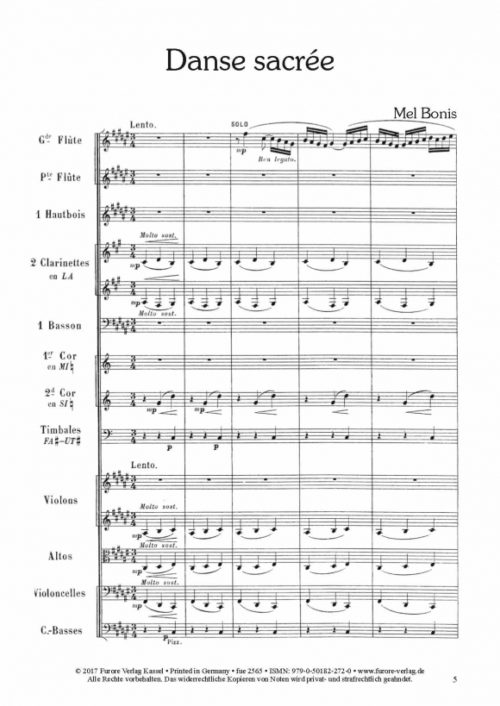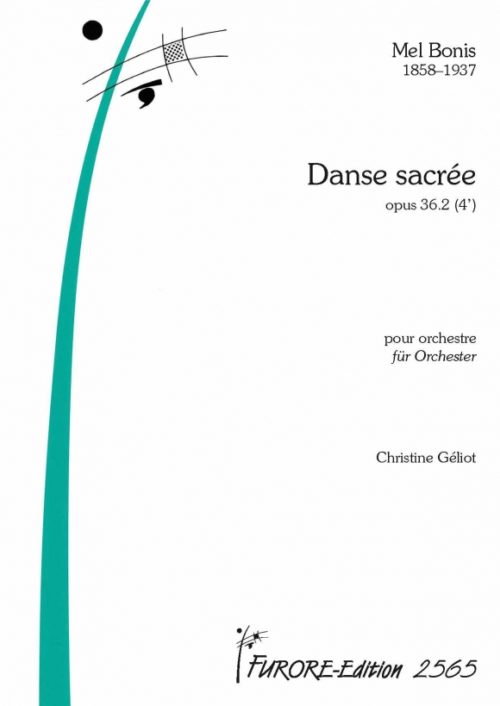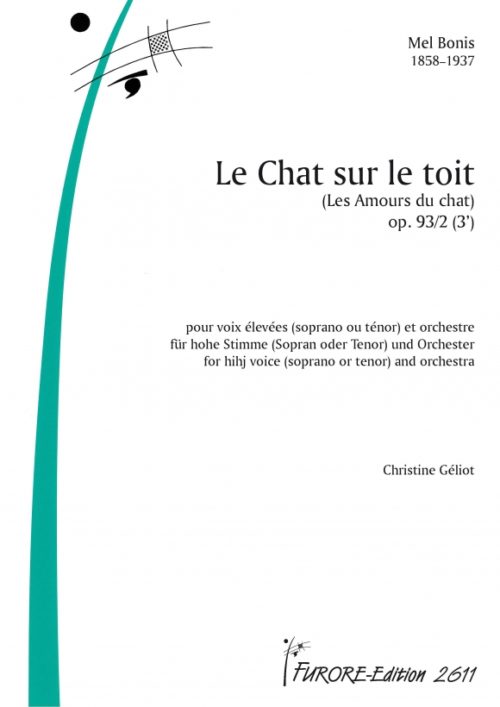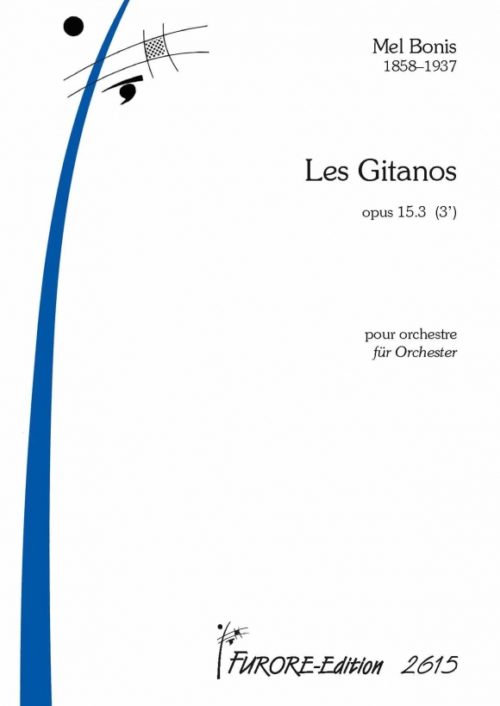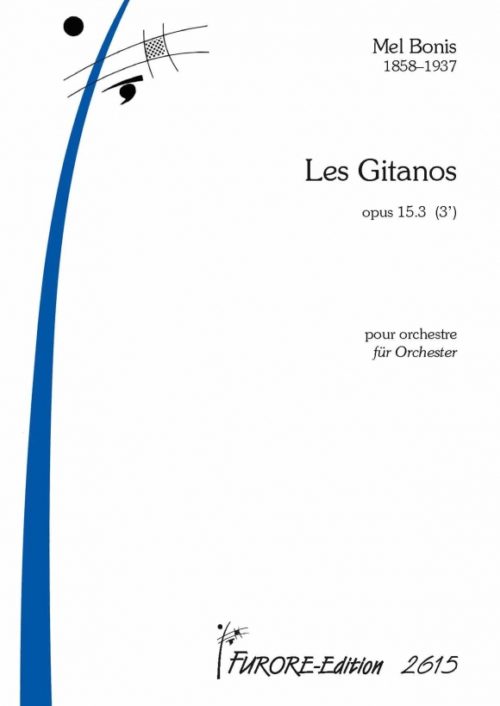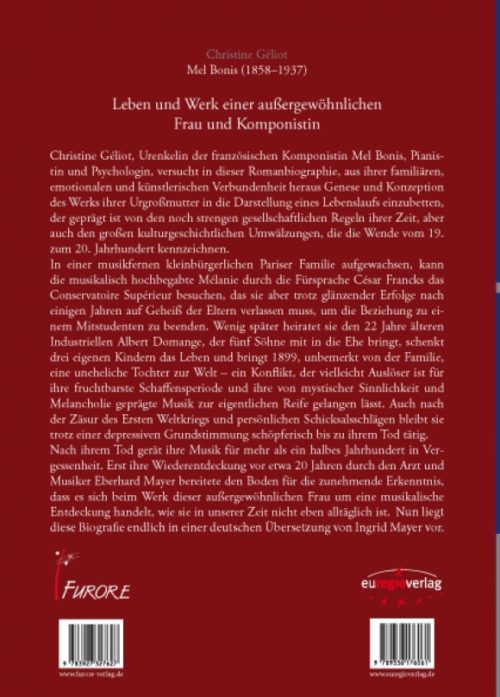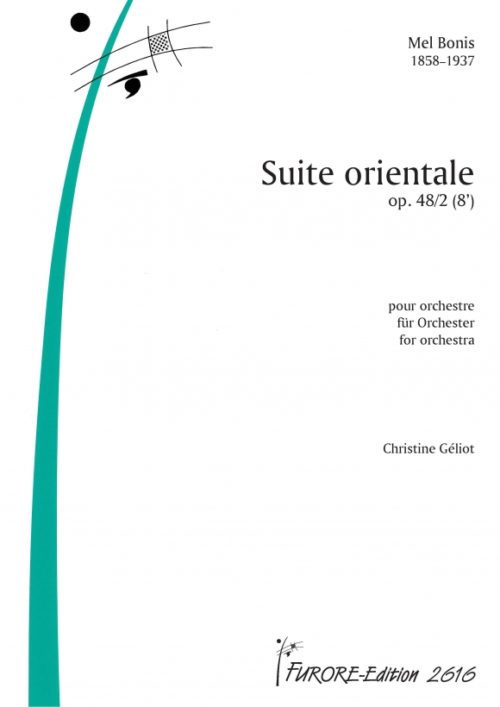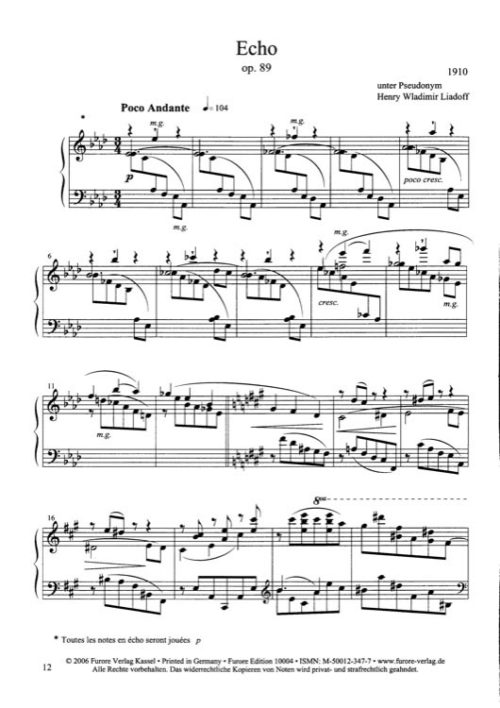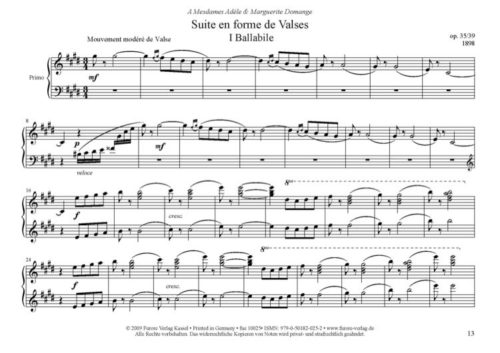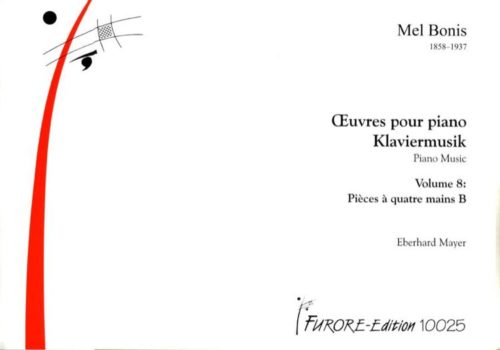The French composer Mel Bonis (1858-1937) came from humble origins among the Parisian petit bourgeois. She is not known to have any musical antecedents; her passion for music was quite her own. After teaching herself to play the piano, Mélanie obtained her parents’ permis-sion to attend music lessons. Thanks to her talent and willpower, she met the right people and César Franck himself made it possible for her to attend the Conservatory in Paris in 1876. She achieved brilliant results in courses in harmony, piano accompaniment and composition, under the masters Guiraud and Bazille, attending classes along with Pierné and Debussy. After studying for three years, and winning a first prize for Harmony and a second prize for Accompaniment, her parents made her leave the Conservatory in order to put an end to her romance with the celebrated Amédée Hettich, a brilliant young student of song. Mélanie then entered into a marriage of convenience, becoming the wife of rich Parisian industrialist Albert Domange. She became responsible for a large family and was burdened with many household chores. In this situation, always far removed from music, she soon rediscovered her passion for composition, a passion enhanced by her hypersensitivity, inspired by her forbidden love and elevated by a deeply Christian attitude to morals and mysticism.
Mel Bonis has left us an important body of works, about 300 pieces covering virtually every genre: choral works, organ pieces, melodies, chamber music (including a number of masterpieces such as the quartets and the sonnets), orchestra and piano pieces. The post-Romantic style of her works is fully in keeping with her era. She displays great variety, ranging from the dramatic to the humorous, is often vigorous and sensual, borrows from the Orient, always writes well and with great sensitivity. These are intimate pieces easily identi-fied by their harmonic and rhythmic originality. The music of Mel Bonis is both original yet well integrated into its time. Deeply moving, it springs from an undying source of inspiration, is well structured and confidently written.
The chamber music represents the flower of her works. It is made up of some twenty works for a variety of instruments, almost always associated with the piano. A dozen of these are major works, sonatas, trios, quartets, septets, which will bear comparison with the best composers of the time.
-


fue 11025
pian é forte. Music for piano
Anna Bon di Venezia Barbara Heller Cécile Chaminade Emilie Zumsteeg Fanny Hensel, geb. Mendelssohn Florentine Mulsant Hope Lee Ljubica Maric Louise Farrenc Maria Hester Park Maria Szymanowska Mel(anie) Bonis Ruth Schonthal Sibylle Pomorin Viera Janárceková Vivienne Olive




